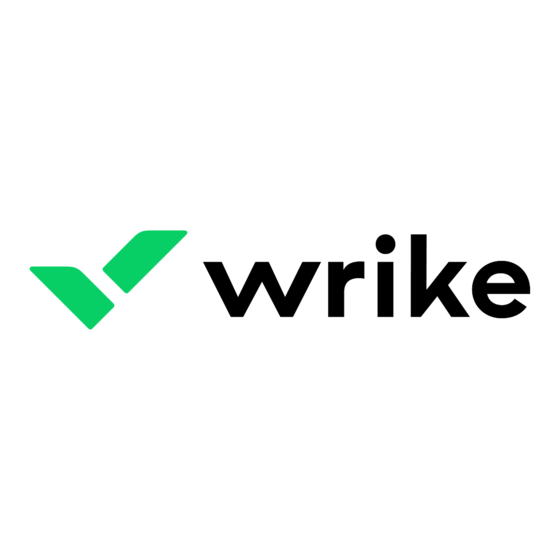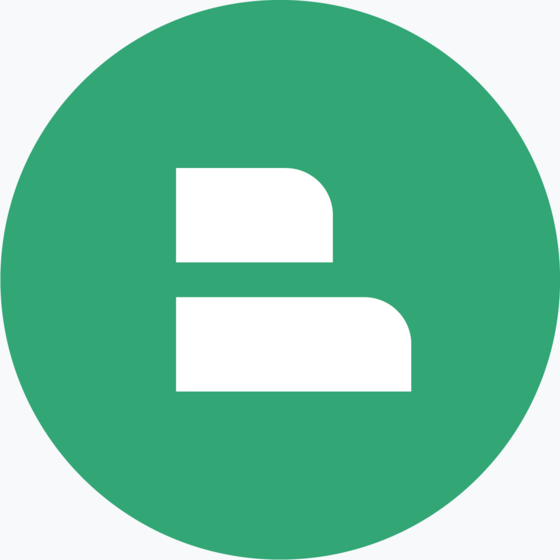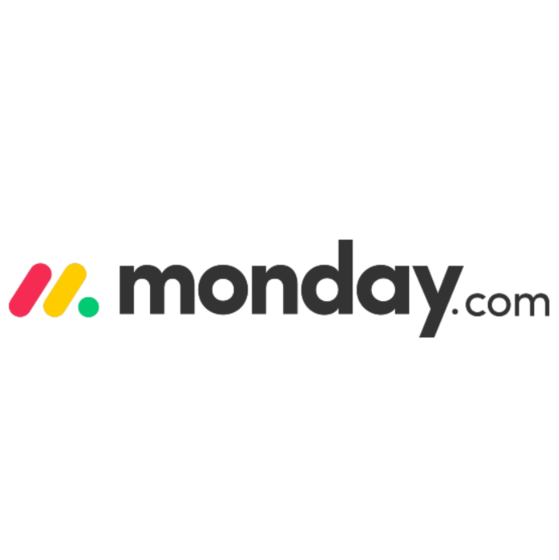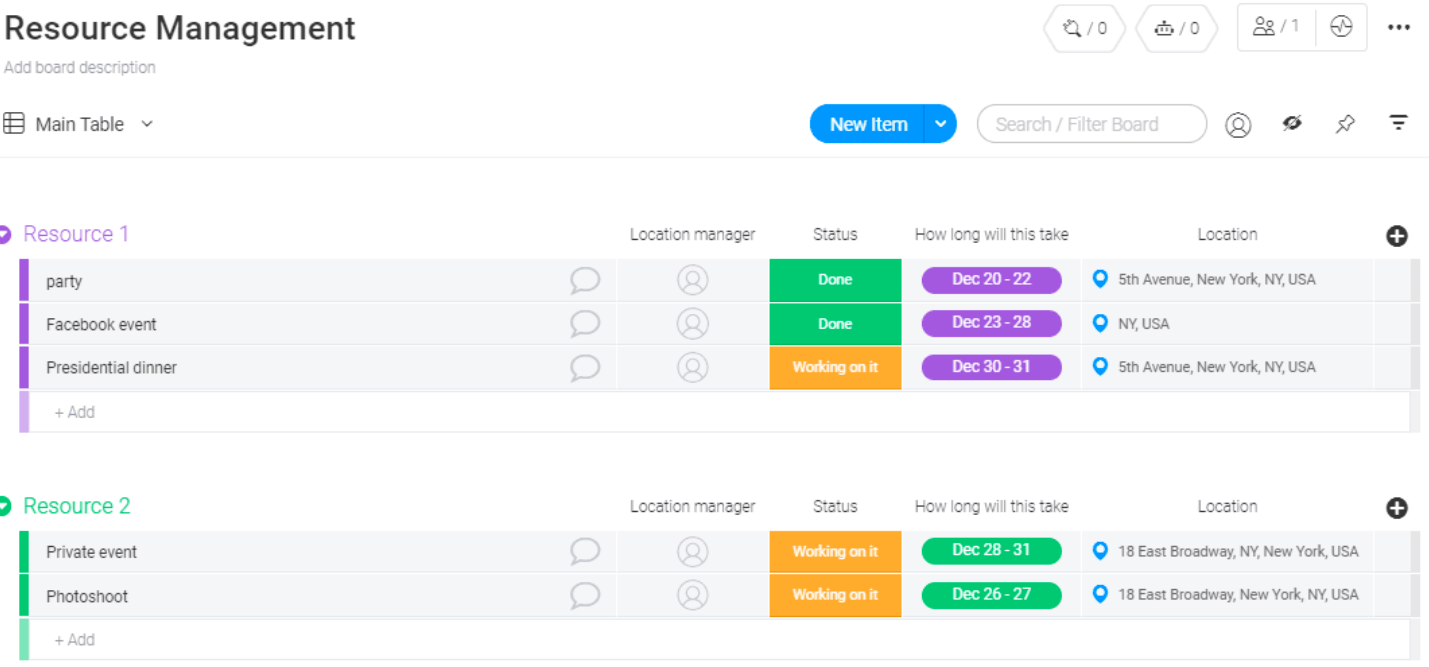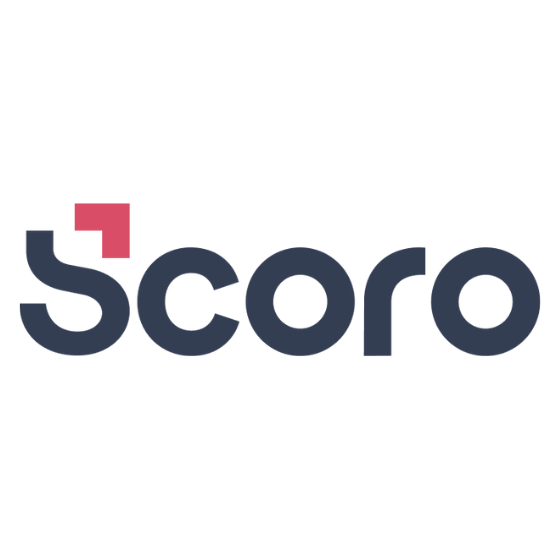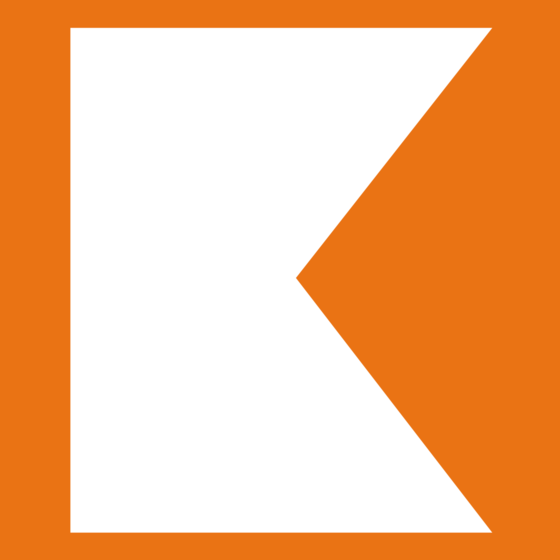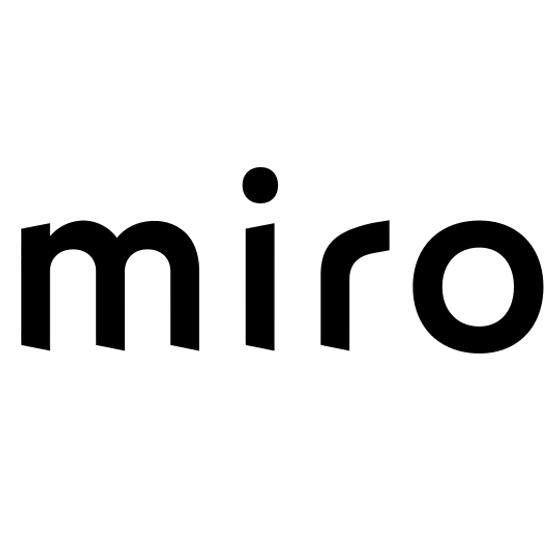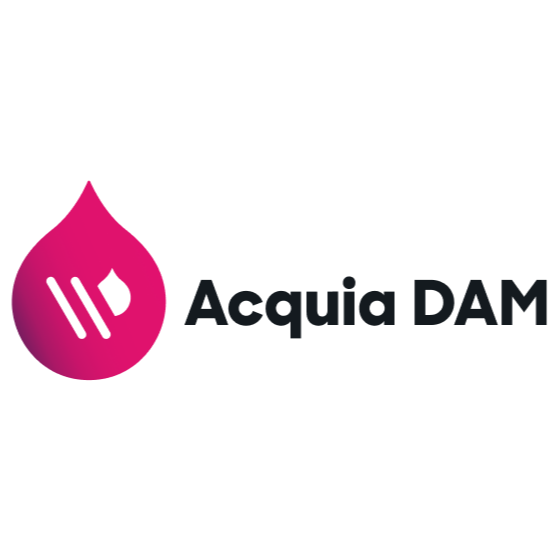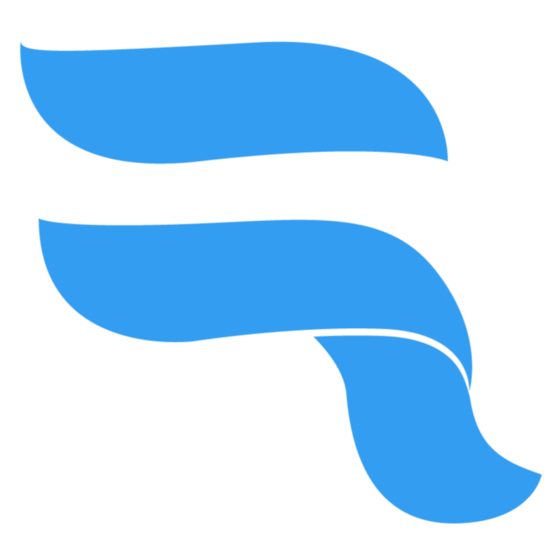10 Best Marketing Resource Management Software Shortlist
Here's my pick of the 10 best software from the 40 tools reviewed.
Get free help from our project management software advisors to find your match.
With so many different marketing resource management software solutions available, figuring out which is right for you is tough. You know you want to optimize and manage marketing resources effectively but need to figure out which tool is best. I've got you! In this post I'll help make your choice easy, sharing my personal experiences using dozens of different resourcing tools with large marketing teams and projects, with my picks of the best marketing resource management software.
Why Trust Our Marketing Resource Management Software Reviews
We’ve been testing and reviewing resource management software since 2012. As project managers ourselves, we know how critical and difficult it is to make the right decision when selecting software.
We invest in deep research to help our audience make better software purchasing decisions. We’ve tested more than 2,000 tools for different project management use cases and written over 1,000 comprehensive software reviews. Learn how we stay transparent & our review methodology.
Best Marketing Resource Management Comparison Chart
Here is a convenient table where you can compare the tools we just covered. If you want to expand your tool research, keep scrolling to our ‘Other Options’ section.
| Tools | Price | |
|---|---|---|
| monday.com | From $8/user/month (billed annually, min 3 seats) | Website |
| Scoro | From $26/user/month (billed annually) | Website |
| Kantata | From $19/user/month (billed annually) | Website |
| Wrike | $9.80/user/month min. 2 seats | Website |
| Hub Planner | From $7/user/month (billed annually) | Website |
| Miro | From $10/user/month | Website |
| SAS Customer Intelligence 360 | Pricing upon request | Website |
| Acquia DAM (Widen) | Pricing available upon request | Website |
| Allocadia | From $99/user/month | Website |
| Ravetree | From $29/user/month | Website |
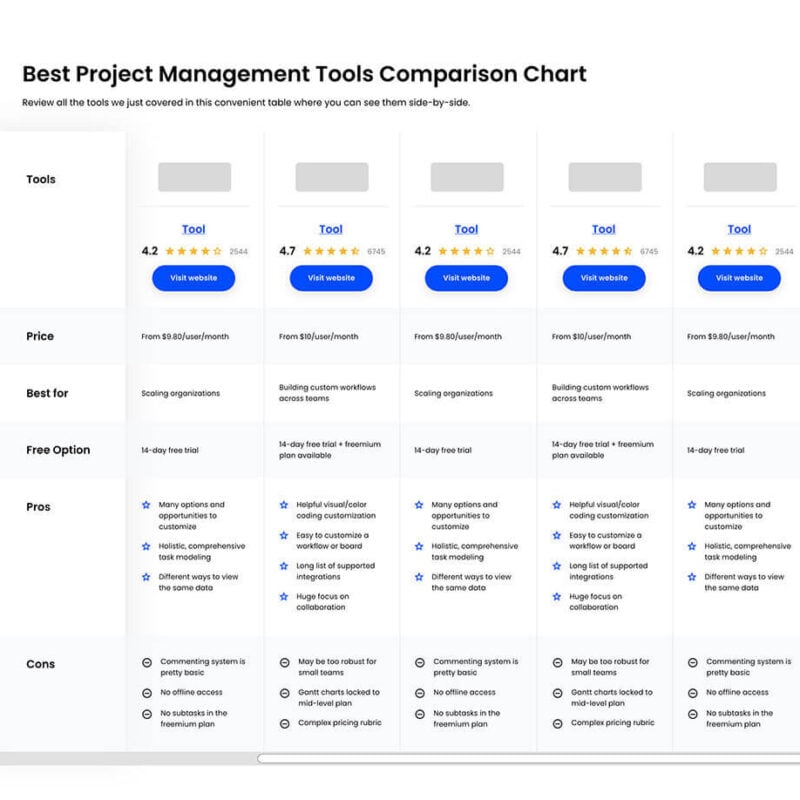
Compare Software Specs Side by Side
Use our comparison chart to review and evaluate software specs side-by-side.
Compare SoftwareHow To Choose Marketing Resource Management Software
With so many different marketing resource management solutions available, it can be challenging to make decisions on what marketing resource management software is going to be the best fit for your needs.
As you're shortlisting, trialing, and selecting marketing resource management software, consider the following:
- What problem are you trying to solve - Start by identifying the marketing resource management feature gap you're trying to fill to clarify the features and functionality the marketing resource management software needs to provide.
- Who will need to use it - To evaluate cost and requirements, consider who'll be using the software and how many licenses you'll need. You'll need to evaluate if it'll just be the project management professionals, or the whole organization that will require access. When that's clear, it's worth considering if you're prioritizing ease of use for all, or speed for your marketing resource management software power users.
- What other tools it needs to work with - Clarify what tools you're replacing, what tools are staying, and the tools you'll need to integrate with, such as accounting, CRM or HR software. You'll need to decide if the tools will need to integrate together, or alternatively, if you can replace multiple tools with one consolidated marketing resource management tool.
- What outcomes are important - Consider the result that the software needs to deliver to be considered a success. Consider what capability you want to gain, or what you want to improve, and how you will be measuring success. For example, an outcome could be the ability to get greater visibility into performance. You could compare marketing resource management features until you’re blue in the face, but if you aren’t thinking about the outcomes you want to drive, you could be wasting a lot of valuable time.
- How it would work within your organization - Consider the software selection alongside your workflows and delivery methodology. Evaluate what's working well, and the areas that are causing issues that need to be addressed. Remember every business is different — don’t assume that because a tool is popular that it'll work in your organization.
Best Marketing Resource Management Software Reviews
Here’s a brief description of each of the marketing resource management software on my list and top features for each. Feel free to check out how I picked the software at any time.
monday.com is a work management platform where you can easily manage complex workflows, tasks, and processes at scale.
Why I picked monday.com: This company has a product made specifically for marketing teams called monday marketer. And just like their work management and Sales CRM products, it’s designed for users of all experience levels. This is because it is hyper-customizable and can fit almost every use case you can think of.
Its resource management capabilities are concentrated in its workload view, available in the Pro and Enterprise plans. This view can help you measure the workload assigned to your team members, see allocation based on colors, and get detailed information on the tasks each person is working on.
monday.com Standout Features & Integrations
Features include a digital asset manager, event management, templates, campaign tracking, a content calendar, proofing, and approval workflows for creative projects.
Integrations include SurveyMonkey, Typeform, Hubspot, Mailchimp, Adobe Creative Cloud, Data Studio, Semrush, and Hootsuite.
Scoro is a work management software that caters to professional services by offering a suite of tools to manage projects, finances, and resources within a single system.
Why I picked Scoro: The platform has an agile Gantt chart feature that facilitates better resource management for marketers. You can get a real-time view of everyone's scheduled workloads, so you can see when your team is available for certain projects or tasks. This feature also saves time because it automatically updates when tasks are linked, helping you minimize your effort toward manual updates.
Furthermore, I like that Scoro offers end-to-end project management capabilities so marketing teams can unify their sales, project delivery, and billing in a single platform, providing complete visibility and control over resource capacity and profitability.
Scoro Standout Features & Integrations
Features include customizable dashboards, multiple currencies, pipeline management, quoting and invoicing features, automation for routine tasks, a drag-and-drop planner or Kanban board, retainers, time tracking, and more.
Integrations include Xero, QuickBooks, Sage Intacct, Microsoft Exchange, Expensify, Stripe, Google Calendar, Jira, Slack, Asana, Dropbox, PayPal, and more.
Kantata is a well-rounded tool that bridges the core planning, execution, project accounting, and analysis systems in a single operating environment. It has modules for project management, accounting, resource management, business intelligence, and team collaboration. On top of this, it offers a system of dashboards, live time and expense tracking features, a great documenting system. And all of these best-in-class features are delivered through straightforward and minimalistic design.
Why I picked Kantata: It ticks off all the boxes when it comes to RM features. The resource management module offers real-time utilization and margins at the project and even the task level. Some key features include resource forecasting, capacity management, skills management, scenario planning, and role-based planning.
Drilling down into its other features, the BI suite module supplies built-in reports, custom reporting, trend analysis, data visualization, as well as data integration with other systems. The software also provides more accounting tools than many others, with project costing, project and task budget management, real-time utilization and margin tracking, invoicing, rate cards, and robust integrations into back-end financial systems. It also has some good contextual collaboration features to communicate in both provide and public discussions around tasks, projects, and many other project objects.
I could go on and on about Kantata's features because there really are too many to list—it’s a comprehensive RM suite, that, despite requiring time to truly master, has been recognized as being easy to use and learn. What’s more, the company leverages its professional services expertise as part of its offering, making available its Kantata BI Consultants who can build reports specifically for your business. As well, they provide some great training resources that can help mitigate the risks and costs of implementation.
Kantata Standout Features & Integrations
Features include resource management, workload and allocation views, skills database, skill gap, projected demand, and projected profitability.
Integrations. As part of their “API-first strategy”, they’ve built a solution that doesn’t require a third party in order to integrate with any apps. They provide an integration platform (called M-Bridge) that’s designed to simplify integration between Kantata and other business apps like CRM, HCM, and financial software. On top of the M-Bridge platform, Kantata provides several pre-built integrations with these tools: Expensify, G Suite, Xero, Salesforce, Netsuite, Jira, Hubspot, Slack, Concur, Dynamics 365, Qualtrics, Quickbooks, and Sage Intacct.
Wrike is a marketing project management software that provides visibility across an entire team’s work, so you can visualize capacity at a glance and balance resources appropriately.
Why I picked Wrike: It is highly configurable and allows users to customize workflows, dashboards, reports, and request forms to suit their specific needs. Wrike’s powerful resource management features enable consistent on-target delivery, ensure workload balance, and help your team deliver on time and on budget.
Wrike’s user-friendly interface enables users to work how they want, whether that’s switching between Kanban boards, using interactive drag-and-drop Gantt charts, or launching workload views to visualize priorities. Wrike features time and expense tracking, intuitive task and project management, visual proofing, pre-built templates for common marketing tasks, reporting, and resource management and allocation.
Wrike has an intuitive navigation with distinct Spaces, folders, and tasks. Easily switch from the home screen to timesheets, dashboards, calendars, reports, and the activity stream. Wrike also has a dedicated help center with interactive training, videos, and a helpful ‘Getting Started’ guide.
Wrike Standout Features & Integrations
Features include job role placeholders, visual allocation information, easy re-assigning of tasks, time tracking, and budget management.
Integrations include 400+ pre-built native integrations, including the most popular file management software from Microsoft, Google, and Dropbox, along with sales and marketing software from Salesforce and Marketo.
Hub Planner software is a resource management software with scheduling, time tracking, and project management features.
Why I Picked Hub Planner: The software can be used to allocate team members to specific projects and tasks based on their skill sets and capacity, helping managers effectively delegate work on multi-expertise teams. Scheduling can be done with the platform's drag-and-drop interface, giving users a clear overview of who's working on what, when. Each team member can track their time with the software for effective capacity planning and resource forecasting.
The software's budgeting tool provides real-time project costs, helping teams track expenses as they progress and avoid overspending. Resource utilization, individual projects, and budgets can be tracked with the software's reporting tool. Reports can be customized to include whatever information is relevant to the user, and exported in various formats to share or store.
Hub Planner Standout Features & Integrations
Features include PTO planning, timesheets, reporting, skills matching, task management, templates, drag and drop scheduler, project budgets, approval flow, and a smart scheduler.
Integrations can be configured using the software's API or with a paid Zapier account.
Miro is a collaborative online whiteboard with over 1,000 templates including mind maps, Kanban boards, Gantt charts, product wireframes, research boards, and flowcharts.
Why I picked Miro: This platform is an excellent resource for your brainstorming sessions with the creative team, especially if your team is largely remote. Its infinite canvas and a vast array of templates give you multiple options to present information to distributed teams. The platform also supports the expression of ideas in multiple formats, including text, images, and videos.
Moreover, features like Miro Assist help generate ideas from basic prompts, while TalkTrack enables the asynchronous explanation of process maps. Additionally, asynchronous collaboration features, such as comments and reactions, facilitates continuous input from team members.
Miro Standout Features & Integrations
Features include video chat, an activity timer, voting polls, boards and templates for brainstorming, task libraries for list making and assigning, stickies capture to transform physical sticky notes into whiteboard notes, a planner tool, a dependencies app, feedback exchange channels, and the ability to work simultaneously.
Integrations with a whole suite of tools, including Zoom, Figma, Asana, Monday.com, Confluence, Microsoft Teams, Jira, Slack, Google Drive, Box, Airtable, Notion, Azure, and Webex. Some integrations are limited to paid plans only.
SAS is an analytics, artificial intelligence, and data platform that helps makes sense of all the data your company produces.
Why I picked SAS: The company has a product called SAS IT Resource Management that helps you monitor your IT enterprise. This not only keeps track of people, but of all resources that impact an IT operation.
Using this product, you manage a data warehouse created from the needs of all your organization. From this data source, you can extract reports and digested information that will help you make better informed decisions.
SAS Standout Features & Integrations
Features include tools such as analytics tools, artificial intelligence (AI) guidance tools, and tools for cross-team & cross-application collaboration.
Integrations in this tool are available through its REST API. IT teams can use it to build custom integrations and connect your current tech stack with this platform.
Acquia DAM (Widen) facilitates content creation and makes it easy to bring your content together, organize it, and deliver it to market. Acquia DAM (Widen)’s workflow feature connects the online proofing and approval process to your digital asset management (DAM) system for marketing assets and brand assets. This allows your entire team to proof content, annotate, and gather team feedback.
Acquia DAM (Widen) pricing starts at $20,000/year.
Allocadia, now called Uptempo, is a marketing insights platform designed to help marketers plan better, and spend smarter.
Why I picked Allocadia: This tool can help you make sure projects are delivered on time, most times. Primarily because of the capacity planning and built-in approval workflows it offers. With the resource view, you can see the allocation of each resource based on capacity, drag and drop tasks to balance utilization, and get information on who is available to manage extra work.
Allocadia Standout Features & Integrations
Features include predictive analytics, intelligent scheduling, metadata capture for Ad campaigns, in-app collaboration with mentions and comments, dashboards, proofing workflows, and project financials.
Integrations include Concur, Marketo, Tableau, Salesforce, Jira, Adobe Workfront, and Coupa. Additionally, there is available APIs so your team can build custom integrations with your current tools.
Ravetree is a complete project and resource management software that's well-suited to marketing agencies with its client-facing features as well as billing and budgeting capabilities.
Why I picked Ravetree: Marketing teams at any type of organization can use this software to manage their resources, track employee time, and optimize their outputs. Timesheets and timers allow team members to account for their working hours and compare them against estimates. Time off requests can be sent and approved through the system, and work can be delegated accordingly. Employees can also be grouped into various team structures to support effective project execution.
What makes this software particularly well suited to marketing agencies are its client-facing features. Teams can create a client portal to keep their contacts up-to-date on their progress, and the platform even has a built-in CRM. Request forms can also be built in the system, making it easy to collect the necessary information for new projects and initiatives. The software also has billing and invoicing capabilities, including sending out estimates to clients and tracking project budgets.
Ravetree Standout Features & Integrations
Features include custom working hours, employee grouping, utilization timelines, allocated vs remaining comparisons, time off requests, project templates, portfolios, dependencies, client portals, client request forms, budgets and billing, and file management.
Integrations include Box, Dropbox, Facebook, HubSpot, Instagram, Github, Google Drive, Gmail, OneDrive, Outlook, QuickBooks, and Stripe.
Other Marketing Resource Management Software
Here are a few more options that did not make it to the top 10 but are worth you looking at if you want to expand your research.
- MARMIND
Best for marketing budget planning (not free)
- Kintone
Best for building custom marketing apps
- NetSuite
Best for analytics
- Bynder
Best for establishing a creative workflow
- Productive
Best for marketing agencies
- Celoxis
Best for advanced project cost and performance analysis
- Meisterplan
Best for capacity planning
- Screendragon
Best marketing proofing and approvals system
- Float
Best for basic applications
- Filecamp
Best for easy-setup and onboarding
- ReportGarden
Best for marketing analytics
- TapClicks
Best for built-in business intelligence capabilities
- MarcomCentral
Best for ease-of-use
- LeanData
Best for existing Salesforce users
- Hive9
Best for built-in financials and budgeting capabilities
- InfiniGrow
Best for SaaS marketers
- Attribution
Best for B2C marketing teams
- CampaignDrive by Pica9
Best for building and creating ads
- 10,000ft by Smartsheet
Best for project planning
- BrandMaker
Best for built-in marketing calendars
- SAP Marketing Cloud
Best for email marketing templates
- Vya
Best for marketing automations
- Dreamdata.io
Best for revenue attribution
- Welcome
Best for virtual event management
- Percolate
Best for combined resource management & campaign management
- OnTrack Workflow
Best for brand asset management
- Adobe Campaign
Best for integrating multiple marketing channels
- IntelligenceBank Digital Asset Management
Best for asset management amongst multiple teams
- FunnelDash
Best for built-in social media management
- NetX
Best for custom metadata fields
Related Project Management Software Reviews
If you still haven't found what you're looking for here, check out these other related tools that we've tested and evaluated:
- Project Management Software
- Resource Management Software
- Task Management Software
- Collaboration Tools
- Project Tracking Software
- Project Scheduling Software
Selection Criteria For Marketing Resource Management Software
Selecting marketing resource management (MRM) software requires a thoughtful approach, focusing on functionality and specific use cases that align with your needs and goals to streamline and optimize marketing processes, assets, and resources. Based on my personal experience researching and trialing these tools, I have developed a series of selection criteria to evaluate and select MRM platforms. Each criterion is also weighted to reflect its importance to my overall assessment.
Core Marketing Resource Management Software Functionality (25% of total weighting score): To be considered for inclusion on my list of the best marketing resource management software, the solution had to support the ability to fulfill common use cases.
- Efficient management and storage of digital assets
- Streamlining and automating marketing workflows
- Facilitating team collaboration and communication
- Tracking marketing budgets and expenditures
- Analyzing and reporting on marketing campaign performance
Additional Standout Features (25% of total weighting score): Beyond basic functionality, standout features differentiate a platform in the competitive MRM space. This criterion looks for innovative and unique capabilities that enhance marketing strategies and offer users a competitive edge, such as:
- Innovations in AI-driven analytics for predicting campaign success
- Advanced customization options for reports and dashboards
- Unique collaborative features, such as real-time editing or feedback loops
- Integration capabilities with emerging marketing technologies
- Exceptional data security and privacy measures
Usability (10% of total weighting score): A powerful tool is only as good as its usability; complex systems can become a barrier rather than an asset. This evaluation focuses on the user experience, which should involve:
- An intuitive interface that balances power with ease of use
- Drag-and-drop functionalities for scheduling and asset management
- Clear and logical navigation paths
- Responsive design for mobile and tablet use
Onboarding (10% of total weighting score): Getting up to speed with new software can be daunting. I assess the onboarding process for its ability to quickly educate new users, providing them with the necessary resources to start realizing value from the platform right away. I particularly look for:
- Availability of training materials, such as videos and templates
- Interactive product tours or onboarding programs
- Support channels like chatbots and webinars for live assistance
- Community forums or knowledge bases for peer support
Customer Support (10% of total weighting score): Effective customer support is essential for maintaining continuous operation and resolving any issues that may arise. This criterion evaluates:
- Accessibility of support via multiple channels (email, phone, live chat)
- Responsiveness and helpfulness of the support team
- Comprehensive FAQ and troubleshooting resources
- Proactive monitoring and maintenance updates from the provider
Value For Money (10% of total weighting score): Investing in MRM software is a significant decision; thus, assessing value for money is critical. We compare the cost against the suite of features offered, looking for transparent pricing and scalability to ensure businesses of all sizes find a suitable option.
- Transparent pricing models without hidden fees
- Scalability of plans to fit various business sizes and needs
- Comparative analysis of features versus price points with competitors
- Free trials or demos to evaluate the platform's fit before purchase
Customer Reviews (10% of total weighting score): Feedback from existing users offers invaluable insights into a platform's effectiveness in real-world scenarios. We scrutinize customer reviews for:
- Consistency of positive feedback across multiple review platforms
- Specific mentions of how the platform has addressed common pain points
- User stories or case studies demonstrating real-world success
- Feedback on the platform's impact on marketing efficiency and ROI
This criteria framework guides my selections, ensuring that the MRM platforms I recommend not only meet basic marketing needs, but also offer additional value through standout features, usability, strong support, and favorable pricing.
Trends In Marketing Resource Management Software For 2024
In 2024, marketing resource management (MRM) software is evolving rapidly, driven by the need to more effectively streamline and optimize marketing processes, assets, and resources. This evolution is marked by several trends that reflect the changing priorities of marketing professionals. Here’s a closer look at current trends that I believe will continue to impact MRM software and the marketing industry as a whole in the future.
Trends in Marketing Resource Management Software
- Increased Emphasis on AI and Machine Learning: AI-driven analytics and machine learning capabilities are becoming more prevalent, offering predictive insights and automation of routine tasks. These technologies help in forecasting campaign performance, automating content tagging, and personalizing marketing efforts at scale.
- Enhanced Collaboration and Remote Work Features: As remote work remains a staple in many organizations, MRM tools are introducing better collaboration features. Real-time editing, feedback loops, and virtual workspace integrations facilitate seamless teamwork, regardless of geographical barriers.
- Content Personalization at Scale: With the vast amount of data available, MRM tools are leveraging AI to offer advanced content personalization capabilities. This includes dynamic content creation that adjusts in real-time based on audience behavior and preferences, enabling marketers to craft highly personalized and effective campaigns.
- Voice and Conversational User Interfaces: The integration of voice and conversational interfaces within MRM platforms is gaining traction. This allows users to interact with the software using natural language processing (NLP), making the tools more accessible and speeding up the execution of tasks through voice commands.
- Blockchain for Transparency and Efficiency: Blockchain technology is being explored for its potential to bring transparency and efficiency to marketing operations. Features like secure and transparent digital asset tracking and smart contracts for managing vendor relationships are emerging, offering new ways to streamline workflows and enhance trust.
These trends underscore the industry's move towards more innovative, efficient, and personalized marketing resource management solutions. As MRM software continues to evolve, these trends are likely to continue to shape the priorities and investments of marketing departments aiming to stay at the forefront of their field.
What Is Marketing Resource Management Software?
Marketing resource management (MRM) software is a tool that helps businesses plan, execute, and monitor their marketing activities. It organizes and streamlines marketing processes, manages assets like digital content, and aligns marketing strategies with business goals. This software aids in budgeting, scheduling, and resource allocation, ensuring marketing efforts are efficient and effective. It's useful for keeping marketing teams coordinated and for tracking the performance of marketing campaigns.
Features of Marketing Resource Management Software
Marketing teams need tools to help them work smarter and faster. Marketing Resource Management (MRM) software is one of these tools. Consequently, it is important to be aware of the features you are looking for when selecting an MRM to help your team organize their work, keep track of their money, and work well together. Here, I outline some of the key features that you should look for when selecting an MRM.
- Centralized Asset Management - This feature ensures all marketing assets are stored in a single, accessible location. It eliminates the time wasted in searching for files across disparate systems, thus enhancing productivity.
- Workflow Automation - By automating repetitive tasks, this functionality saves valuable time and reduces the chance for human error, allowing teams to focus on more strategic initiatives.
- Collaboration Tools - Effective collaboration tools within MRM software facilitate seamless communication and teamwork, crucial for aligning marketing efforts and avoiding silos.
- Budget Tracking and Management - Keeping a close eye on marketing spend against the budget, this feature helps ensure financial resources are utilized efficiently, maximizing ROI.
- Performance Analytics - With insights into marketing campaign performance, decision-makers can adjust strategies in real-time for better outcomes, making data-driven decisions the norm.
- Brand Compliance - This ensures all marketing materials are consistent with brand guidelines, maintaining a cohesive brand identity across all channels and touchpoints.
- Customizable Dashboards - By providing a personalized overview of key metrics and KPIs, these dashboards enable marketers to quickly assess the health of their campaigns and make informed decisions.
- Content Calendar and Planning Tools - These tools aid in planning and scheduling marketing activities, ensuring a strategic approach to content distribution and campaign execution.
- Resource Allocation and Scheduling - By efficiently managing team workloads and resources, this feature prevents burnout and ensures projects are delivered on time.
- Digital Asset Management (DAM) - This extends beyond simple storage, offering features for tagging, categorizing, and optimizing the use of digital assets, enhancing discoverability and reuse.
Navigating the marketing industry today demands tools that not only keep pace, but also propel operations forward. MRM software, with its suite of features designed for optimization and efficiency, can be an essential ally. From ensuring brand consistency to leveraging analytics for strategic insights, the capabilities these tools offer are foundational to not just surviving, but thriving.
Benefits of Marketing Resource Management Software
Choosing the right tools for your marketing team can make a big difference in how efficiently and effectively you can run campaigns and manage resources. Marketing Resource Management (MRM) software is a powerful solution that can bring several key benefits to the table, both for individual users and organizations as a whole. Here are five primary benefits that highlight why MRM software is a smart investment for businesses looking to elevate their marketing efforts:
- Improved Efficiency - MRM software streamlines marketing processes, reducing the time spent on manual tasks. This means users can focus more on creative and strategic tasks, boosting overall productivity.
- Enhanced Collaboration - With features that facilitate communication and project tracking, team members can work together more seamlessly, regardless of their location. This leads to better coordinated marketing efforts and faster project completion times.
- Better Budget Management - The software provides tools for tracking marketing expenses in real time, helping businesses stay within their budgets and allocate funds more effectively. This financial oversight is crucial for maximizing the return on investment (ROI) of marketing campaigns.
- Consistent Brand Messaging - MRM software ensures that all marketing materials are aligned with brand guidelines, helping to maintain a consistent brand image across all channels. This consistency is vital for building trust and recognition with your audience.
- Data-Driven Decisions - By offering analytics and reporting tools, MRM software enables marketers to measure the performance of their campaigns accurately. This data empowers businesses to make informed decisions that can improve future marketing strategies.
Adopting MRM software can significantly enhance the way marketing teams operate, bringing about higher productivity, better collaboration, and more effective campaign management. For organizations looking to optimize their marketing processes and achieve better results, investing in MRM software can be an excellent option to facilitate future success.
Costs & Pricing for Marketing Resource Management Software
MRM software varies widely in terms of functionality, scalability, and, importantly, pricing. Typically, providers offer a range of plans to cater to different sizes and types of businesses, from small startups to large enterprises.
Understanding the common plan options and what they include can help you make an informed decision that aligns with your marketing needs and budget. Here is a breakdown of typical plans, pricing, and features you may see as you select the right MRM software for you.
Plan Comparison Table for Marketing Resource Management Software
| Plan Type | Average Price | Common Features |
|---|---|---|
| Free | $0 | Basic asset management, limited users, essential collaboration tools, community support |
| Basic | $20-$100/user/month | Advanced asset management, workflow automation, basic analytics, email support |
| Professional | $100-$300/user/month | Full digital asset management (DAM), comprehensive analytics, API access, 24/7 support |
| Enterprise | Custom Pricing | Custom integrations, advanced security features, dedicated account manager, unlimited storage |
When selecting a plan, it is also important to consider both the immediate and future needs of your marketing team. Starting with a basic or professional plan might be more cost-effective, offering you the flexibility to upgrade as your team grows and requires more advanced features.
Marketing Resource Management Software Frequently Asked Questions
Find answers to common questions other people ask about this topic.
What key features should I look for in marketing resource management software?
- Apps and integrations: With the right apps and integrations, you can customize marketing resource management software to meet your specific requirements. Popular integrations include those for project management software (Asana and Trello), calendars (Google Calendar), and productivity apps (Slack).
- Visualization: The ability to visualize your marketing team’s workload allows you to more efficiently plan projects, monitor progress, and more. For example, you can track team member progress in each stage.
- Forecasting: Resource forecasting will save you time and money while eliminating the stress of not knowing what comes next.
- Reporting: It doesn’t matter if you’re sharing reports with other team members, a supervisor, or stakeholders; clear and consistent reporting can help. Reports can include budget data such as budget disbursed or remaining budget, as well as personnel associated with each project.
More about the common features of resource management software here.
What Are The Benefits Of Using A Marketing Resource Management Solution?
- Improve marketing ROI: With the right MRM solution in place, there’s a greater chance of improving your marketing return on investment (ROI).
- Flexibility: The best MRM systems are flexible, thus allowing you to create a system that works best for you and your team.
- Tech support: With a DIY approach to marketing resource management, you don’t have access to tech support or customer service. But when you choose a software application, there are people dedicated to providing you with the best possible customer experience.
Learn more about the benefits of resource management software here.
How Do You Compare MRM Software?
- Features: No two solutions have the same feature list, so this is a good place to begin your comparison. From content management to marketing automation, there are features for every team or user. Make sure to choose something that will fit your use case.
- Price: You’re seeking a better workflow and a way to automate tasks, but only if it fits into your budget. Compare software solutions with your monthly and annual budget in mind.
- Usability: Marketers don’t want to spend hours on end learning how to use a new software application. For this reason, most solutions are user-friendly, but remember, some will suit you better than others.
Why is resource loading important in Marketing teams?
Resource loading is important because it is a calculation of the time it takes to complete project tasks based on resource availability, or the amount of work your project team is programmed to take on.
And contrary to what most people think, we can’t have people at 100% utilization rates! Maybe when AI takes over, but not with humans. Read more about resource loading and how to create a resource loaded chart in this article.
What other related tools can I use?
If an MRM tool isn’t the right fit for your needs, there are plenty of other resource and marketing management tools out there that might suit you better. Check out some of our other software reviews:
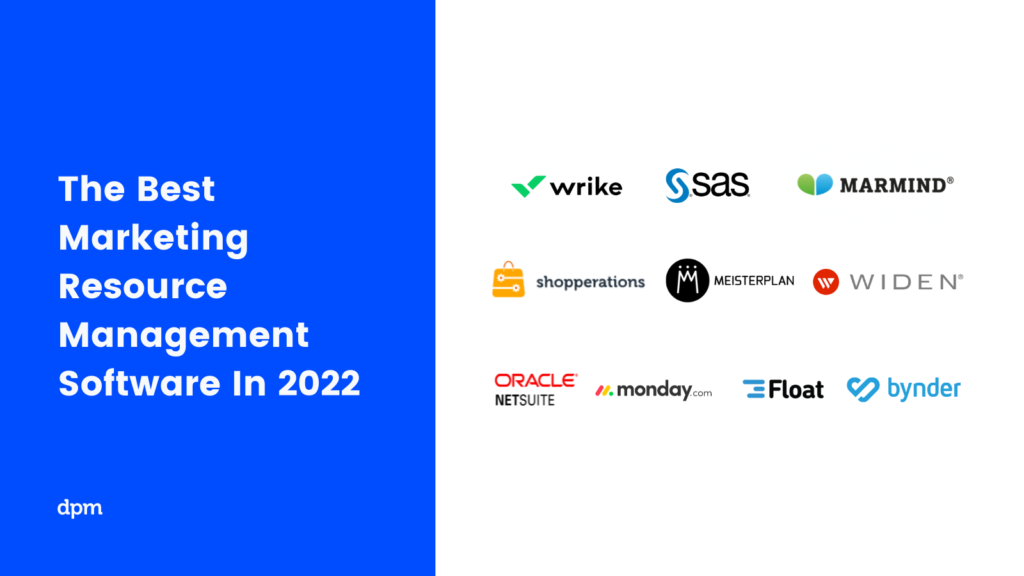
What's Next?
Now that you know some of the best marketing resource management tools, you might want to read our guide to resource availability in project management to get the most out of your team, boost morale, and improve output. You can also learn about 5 resource-leveling techniques that work or check out our ultimate guide to resource management plans.
Sign up for our Insider Membership Newsletter for the latest insights from top thinkers in the digital project management niche.

